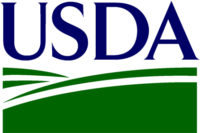USDA revealed a new resource created in conjunction with Colorado State University that will help communities and businesses evaluate the economic benefits of investing in local food systems. USDA Secretary Tom Vilsack announced details about “The Economics of Local Food Systems: A Toolkit to Guide Community Discussions, Assessments and Choices” in his keynote remarks at the 12th Annual Good Food Festival and Conference in Chicago.
“Strong local and regional food systems are helping to revitalize rural and urban communities across the country, and more than 160,000 farmers and ranchers nationwide are tapping into growing consumer demand for locally grown products. With USDA support, this sector is increasing access to healthy foods for local residents and creating opportunity for small businesses that store, process, market and distribute food,” Vilsack says. “Now community leaders have a toolkit that can help measure job creation and other economic development indicators, which will help make the case for continued investments.”
The Local Food System Toolkit was developed by the Agricultural Marketing Service (AMS) to help communities reliably evaluate the economic impact of investing in local and regional food systems. The Local Food System Toolkit provides detailed guidance in seven modules to measure and assess the expected economic impacts of local food investments. Using real-world projects, experiences, and applied research, it provides grounded, credible, and useable assessment methods. The Local Food System Toolkit can be used by policy makers, community leaders, private businesses or foundations to offer specific estimates that will help them decide whether to invest in initiatives that increase local food activity.





